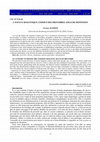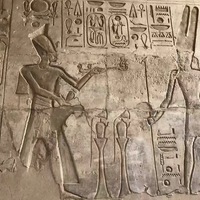Papers by Georges Kleiber

Neophilologica, Dec 29, 2023
The studies of anaphoric expressions have shown that we can and must link the stable results acqu... more The studies of anaphoric expressions have shown that we can and must link the stable results acquired over the last forty years on their functioning to more recent socio-cognitive, taxonomic, multimodal, etc. perspectives and examine and explain two aspects of cataphoric demonstratives (CDs): on the one hand, their constructional scheme and, on the other, the formal and semantic nature of their subsequent or postcedent. We propose here to continue this analysis of CDs, this time looking at their referential operation as such and asking the question: how do CDs make us reach the intended referent? What precisely is the interpretative procedure involved? Our analyses show that rather than directly contrasting CDs with anaphoric demonstratives, it is more relevant and, therefore, more fruitful to compare them directly with gestural demonstratives. As we have seen, the two uses of demonstratives correspond to the same cognitive situation, that of introducing a new referent into discourse memory. This cognitive kinship gives rise to a common semiotic hybridity and, consequently, a referential operation, which we have detailed in nine points, that turns out to be largely identical, the differences observed being directly due to the difference in the nature of the index.
Langue Francaise, 1994
Georges Kleiber : « Contexte, interprétation et mémoire : approche standard vs approche cognitive... more Georges Kleiber : « Contexte, interprétation et mémoire : approche standard vs approche cognitive » The aim of this paper is to show how the classic static conception of the context has evolved in a more dynamic one which incorporates crucially the memory. In the first section, we expose the principal ideas of the standard approach and emphasize the main failures of it. The second section presents then the cognitive theory of the context which offers new solutions to the building of the interpretation of an utterance.
Langages, 1997
Should linguistics encompass the real ? Some think it shouldn't, but can we conceive of a mea... more Should linguistics encompass the real ? Some think it shouldn't, but can we conceive of a meaning disconnected from its reference ? We only have access to the world such as we perceive it, not to the objective world, and what matters is that a stable intersubjective community can agree on its representation. Referential semantics presupposes a language which is oriented towards « the outside » . The fact that this exstant outside is firmly structured by language does not mean one should consider it as a mere discursive object. Referential conceptions postulate a homogeneous meaning. Our contention, however, is that meaning is heterogeneous and that according to the type of expression used it pertains either to a descriptive model, or to an instructional model, or on occasion to both.
De Gruyter eBooks, Oct 8, 2010
De Boeck Supérieur eBooks, 1996
... Autrement dit, si tous les «glissements référentiels» semblables à ceux de 1)-2) ou 22)-23) n... more ... Autrement dit, si tous les «glissements référentiels» semblables à ceux de 1)-2) ou 22)-23) ne peuvent pas être expliqués en termes de facettes sémantiques, définies indépendamment des faits à expliquer, la notion même de facette sémantique devient inutile. ...

DOAJ (DOAJ: Directory of Open Access Journals), Sep 1, 2019
Ce n'est que depuis une trentaine d'années que l'on s'est intéressé sérieusement à l'analyse prop... more Ce n'est que depuis une trentaine d'années que l'on s'est intéressé sérieusement à l'analyse proprement linguistique des proverbes. Les études, nombreuses et diversifiées, auxquelles a donné lieu ce mouvement, n'ont toutefois pas débouché sur une définition claire et univoque des parémies. Nous nous proposons de reprendre ici le flambeau, en nous plaçant uniquement sur le plan du sens avec comme objectif de mettre en évidence l'espace sémantique commun des proverbes. Notre parcours identificatoire se fera en cinq étapes dont chacune correspondra à un critère définitoire. Les quatre premières dégageront des critères communs aux proverbes et aux dictons, à savoir leur statut de phrase générique avec son corollaire l'expression d'une vérité nomique, leur autonomie ou indépendance sémantique, leur état de phrase générique «à occasions restreintes» et leur statut de dénomination. La cinquième et dernière étape mettra au jour ce qui sépare sémantiquement les proverbes des dictons, à savoir une différence de hauteur abstractive, qui fait des proverbes des unités plurimorphiques, à référence hétérogène, et des dictons des unités monomorphique, à référence homogène.
HAL (Le Centre pour la Communication Scientifique Directe), Jun 1, 2022
Langue Francaise, 2003
Georges Kleiber : The French Imparfait: aspect or anaphora? In this article, we will only tackle ... more Georges Kleiber : The French Imparfait: aspect or anaphora? In this article, we will only tackle the anaphoric dimension of imperfect without trying to defend the part-whole option supported with Anne-Marie Berthonneau in 1993. First we will confront the imperfectivist approach to the temporal anaphoric approach to attempt at determining which one may prevail against the other. Then we will endeavour to show that, whatever the importance we may still attach to imperfectivity as well, imperfect is intrinsically an anaphoric marker, but an anaphoric that is not solely temporal.
Studia Romanica Posnaniensia, 1986
LiCArC (Littérature et culture arabes contemporaines), 2020
Comment identifie-ton les odeurs ? Type de publication: Article de revue Revue: LiCArC Littératur... more Comment identifie-ton les odeurs ? Type de publication: Article de revue Revue: LiCArC Littérature et culture arabes contemporaines 2020, Hors-série n° 2. Odeurs, saveurs et couleurs du Sud au Nord de la Méditerranée Auteur: Kleiber (Georges) Résumé: Cette contribution examine la question de l'identification des odeurs. Il s'agit d'une part de démontrer l'inexistence des odoronymes, les « noms d'odeurs » étant soit des noms généraux ou superordonnés, soit des noms servant à spécifier le type d'odeur ; d'autre part, d'analyser les constructions binominales avec odeur comme nom-tête, de décrire les caractéristiques de la construction de catégorisation des odeurs et de mettre en évidence l'origine de son pouvoir de catégorisation olfactive.
Cahiers de lexicologie, 1988
Romanica Cracoviensia, 2011
Romanische Forschungen, 1998
Champs linguistiques. Manuels, 2003
... La syntaxe raisonnée. 2003. 384 pages. Editeur. De Boeck Université. ISBN 9782801113202. Aler... more ... La syntaxe raisonnée. 2003. 384 pages. Editeur. De Boeck Université. ISBN 9782801113202. Alertes e-mail. ... Être averti par courriel à chaque nouvelle parution : d'une publication de Georges Kleiber d'une publication de Martin Riegel d'une citation de cet article. ...
De Boeck Supérieur eBooks, Jul 1, 1998

Journal of Pragmatics, Mar 1, 1999
The aim of this paper is to give an answer to the problem raised by the analysis of the relation ... more The aim of this paper is to give an answer to the problem raised by the analysis of the relation which holds between the two referents involved in an associative anaphor. By starting with restricted facts over the phenomenon, we try to show that two factors are working in the mechanism of the relation: a condition of alienation and the principle of ontological congruence. These two factors explain in a novel and stimulating fashion why the utterances: ?Pierre a expos~ son dernier tableau. La beaut~ (= la beaut6 du tableau) est fascinante. [Pierre exhibited his latest painting. The beauty (= the beauty of the painting) was fascinating.], ?Max entre. Les yeux (= les yeux de Max) sont hors de leur orbite. [Max comes in. The eyes (= Max's eyes) are out of their sockets] and ?Paul ouvrit la commode. Le bois (= le bois de la commode) ~tait polychrome. [Paul opened the chest-of-drawers. The wood (= the wood of the chest) was polychrome] are considered deviant, whereas the sequences: Paul lava la voiture, mais oublia le capot (= le capot de la voiture). [Paul washed the car but forgot the bonnet (= the bonnet of the car)] and Max entre, les yeux brillants. [Max comes in, the eyes shining] are considered well-formed.










Uploads
Papers by Georges Kleiber